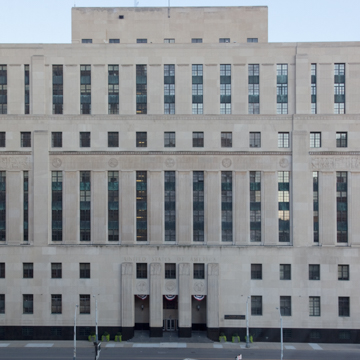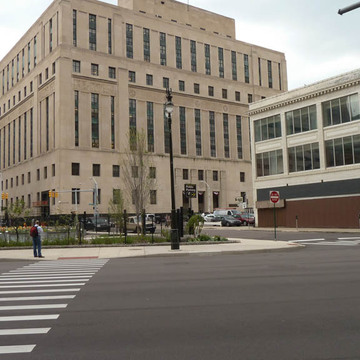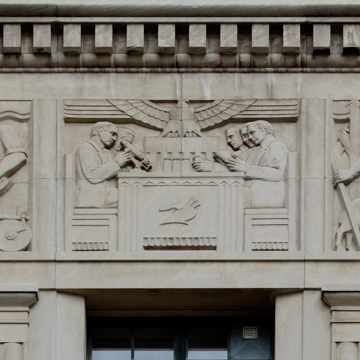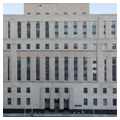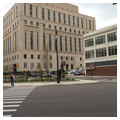You are here
Detroit Federal Building/Theodore Levin U.S. District Courthouse (U.S. Post Office, Courthouse, and Custom House)
The sleekly Moderne federal building stands on the site once occupied by Fort Learnault, Fort Shelby, and later, in 1897, the Richardsonian Romanesque U.S. Post Office, Courthouse, and Custom House by James H. Windrim. The present ten-story steel-frame structure with limestone exterior walls has an open central court above the second floor. The building rests on a base of polished black stone. Fluted pilasters mark the recessed entrance, above which a relief sculpture of eagles and emblems represents the building's governmental functions. Of particular interest is the dignity of U.S. District Courtroom (Judge John Feikens's courtroom, Room 733), in which were installed varied polished marble and carved wood trim and furnishings removed from the 1897 courthouse that was demolished to make way for this building. James A. Wetmore, Supervising Architect of the U.S. Treasury, oversaw the project. In response to the huge demand for federal buildings in the 1920s and the urging of the AIA, the Public Buildings Act of 1926 gave Wetmore authority to employ outside architects.
Writing Credits
If SAH Archipedia has been useful to you, please consider supporting it.
SAH Archipedia tells the story of the United States through its buildings, landscapes, and cities. This freely available resource empowers the public with authoritative knowledge that deepens their understanding and appreciation of the built environment. But the Society of Architectural Historians, which created SAH Archipedia with University of Virginia Press, needs your support to maintain the high-caliber research, writing, photography, cartography, editing, design, and programming that make SAH Archipedia a trusted online resource available to all who value the history of place, heritage tourism, and learning.















